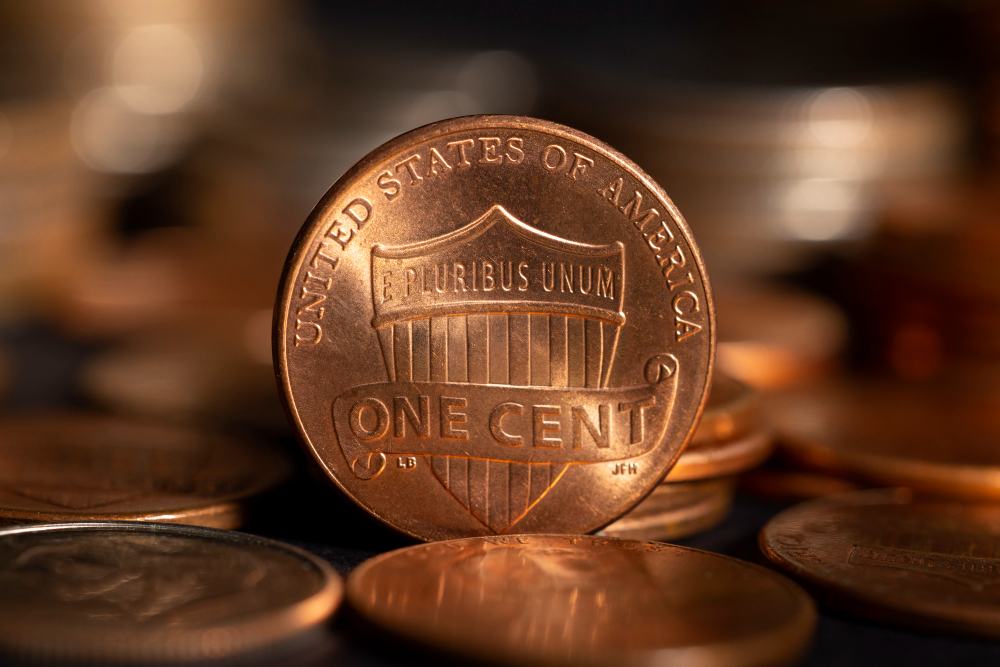1944 Wheat Penny Value: What Makes This Penny So Valuable?

The 1944 Wheat Penny is one of the most widely collected coins in U.S. history, valued by hobbyists and serious numismatists alike. While pennies may seem like everyday currency, certain historical pennies, like the 1944 Wheat Penny, can be surprisingly valuable. This particular penny holds a special place in U.S. coinage due to its historical context, variations, and rarity in certain conditions. Understanding the value of the 1944 Wheat Penny involves knowing what to look for and recognizing the specific qualities that can drive up its worth.
In this article, we’ll explore the details of the 1944 Wheat Penny, including its design, variations, key factors influencing its value, and how much you might expect to receive for one in different conditions.
What is the 1944 Wheat Penny?
The 1944 Wheat Penny was minted during World War II, a period when the U.S. was facing material shortages and other logistical challenges. As a result, the composition and production of pennies shifted, making some variations from that year unique and valuable.
In 1944, most pennies were made of copper, unlike the steel cents produced in 1943, which were created to conserve copper for the war effort. By 1944, the Mint had returned to producing pennies using a copper alloy, making this penny somewhat more traditional than its immediate predecessor. However, the 1944 penny stands out because of some unusual and rare errors that occurred during minting, which can make certain 1944 Wheat Pennies worth considerably more than face value.
Key Features of the 1944 Wheat Penny
The 1944 Wheat Penny features Abraham Lincoln on the obverse (front) side and two wheat stalks on the reverse (back) side, hence the name “Wheat Penny.” These pennies were produced in three U.S. mints: Philadelphia, Denver, and San Francisco, resulting in the three main variations of the coin: 1944 (no mint mark), 1944-D, and 1944-S Wheat Pennies.
Here are the main characteristics of the 1944 Wheat Penny:
- Obverse Design: Portrait of Abraham Lincoln, designed by Victor D. Brenner.
- Reverse Design: Wheat ears symbolizing prosperity and growth.
- Metal Composition: Primarily copper, with a small percentage of zinc, unlike the 1943 steel penny.
- Diameter: 19mm.
- Weight: Approximately 3.11 grams.
The Different Types of 1944 Wheat Pennies
Understanding the 1944 Wheat Penny Value requires a look at the specific types of pennies produced that year, each with unique characteristics and potential value.
1. 1944 No Mint Mark (Philadelphia Mint)
The 1944 Wheat Penny with no mint mark was minted in Philadelphia and is one of the more common versions. Philadelphia produced the largest quantity of these pennies, meaning they are more widely available than other varieties.
2. 1944-D Wheat Penny (Denver Mint)
The 1944-D Wheat Penny, produced in Denver, bears a “D” mint mark below the date on the obverse side. This variation is also quite common but can hold a higher value in mint condition than its Philadelphia counterpart.
3. 1944-S Wheat Penny (San Francisco Mint)
The 1944-S Wheat Penny was minted in San Francisco and has an “S” mint mark. While more common than some error coins, the 1944-S is still relatively sought after, especially in pristine condition.
4. 1944 Steel Wheat Penny
One of the rarest and most valuable variations is the 1944 Steel Wheat Penny. This coin is an error penny, as the Mint unintentionally used leftover steel blanks from 1943. Due to its rarity, the 1944 Steel Penny is highly collectible, with a significantly higher value than copper 1944 pennies.
What Influences the Value of the 1944 Wheat Penny?
The 1944 Wheat Penny Value depends on several factors, including its condition, rarity, demand, and any unique mint errors. Here’s a closer look at these factors:
1. Condition
Coin grading plays a crucial role in determining the value of any coin, including the 1944 Wheat Penny. Collectors assess condition through a grading scale, where coins can be rated as Good, Fine, Very Fine, Extremely Fine, About Uncirculated, and Mint State. Generally, a 1944 Wheat Penny in mint condition (uncirculated) will be worth more than one that shows signs of wear.
- Circulated Condition: 1944 Wheat Pennies that show wear but still have visible details typically hold lower value, ranging from a few cents to a few dollars depending on the mint mark and specific condition.
- Uncirculated Condition: Coins in uncirculated or mint state condition can be worth more, especially if they have no marks or scratches.
2. Mint Mark and Variations
As mentioned, different mint marks can impact value. The 1944-D and 1944-S Wheat Pennies are often slightly more valuable than those without a mint mark. However, the 1944 Steel Penny is by far the rarest and most valuable variation due to its accidental production.
3. Errors and Rare Varieties
The most valuable 1944 Wheat Pennies are those with unique errors, such as double die errors or off-center strikes. The 1944 Steel Penny is another prime example of a rare error coin. These error pennies can be worth significantly more than standard copper Wheat Pennies.
4. Historical Demand
Many collectors seek out 1944 Wheat Pennies because of their historical significance and connection to World War II. This increased demand can slightly boost the value of even common 1944 pennies, as they are an accessible piece of American history.

How Much is the 1944 Wheat Penny Worth Today?
The value of the 1944 Wheat Penny varies based on the factors discussed above. Here’s a general guide to the typical value range:
- 1944 (No Mint Mark): Usually valued between $0.05 to $0.10 in circulated condition, while higher-grade, uncirculated versions can fetch up to $5 or more.
- 1944-D: Circulated 1944-D Wheat Pennies generally range from $0.10 to $0.20, with uncirculated coins reaching up to $6 or $7.
- 1944-S: The value for 1944-S pennies is similar to that of the 1944-D, ranging from $0.10 in circulated condition to about $5 or more for uncirculated examples.
- 1944 Steel Wheat Penny: This error coin is the most valuable, with prices ranging from $10,000 to $100,000 or more depending on the condition and certification.
Coins with additional errors, such as doubled dies, may hold even higher value, especially among serious collectors.
How to Identify and Sell a 1944 Wheat Penny
If you’re interested in selling a 1944 Wheat Penny, it’s important to properly evaluate its authenticity and condition. Here are some steps to take:
- Check for Mint Marks: Identify if the penny has a mint mark (D or S) or if it’s a Philadelphia mint with no mark.
- Examine for Errors: Look for unusual features like doubling on the lettering or off-center strikes.
- Get a Professional Appraisal: For high-value pennies, especially rare ones like the 1944 Steel Wheat Penny, consider having the coin graded and authenticated by a professional service such as the Professional Coin Grading Service (PCGS) or Numismatic Guaranty Corporation (NGC).
- Sell to Reputable Dealers or Auctions: Once you know the coin’s value, consider selling it through reputable coin dealers or auction platforms like eBay or Heritage Auctions, especially if it’s a rare variety.
Conclusion: Is the 1944 Wheat Penny Worth Collecting?
The 1944 Wheat Penny Value makes it an exciting coin to collect, whether you’re a seasoned numismatist or a casual hobbyist. While many 1944 Wheat Pennies are relatively common and may only be worth a few cents, variations like the 1944 Steel Penny or error coins hold much higher value. Collecting Wheat Pennies can be an accessible way to explore American history, with some coins offering a surprising return on investment.
If you own a 1944 Wheat Penny, taking the time to properly assess its condition and any potential minting errors can help you determine its true value. Whether it’s worth a few cents or a few thousand dollars, the 1944 Wheat Penny is a fascinating relic of its time and remains a popular choice among coin collectors today.



